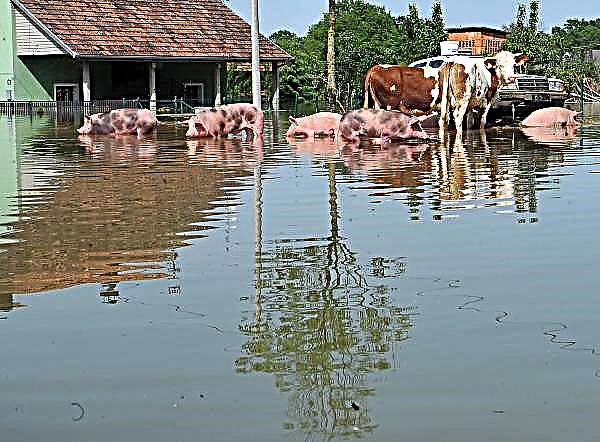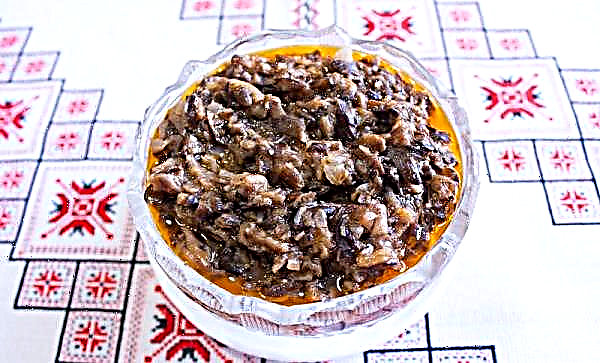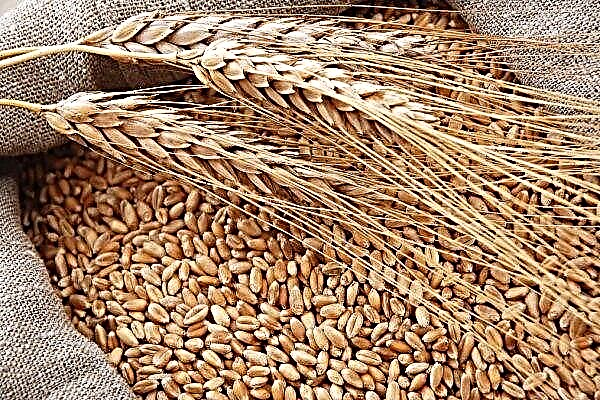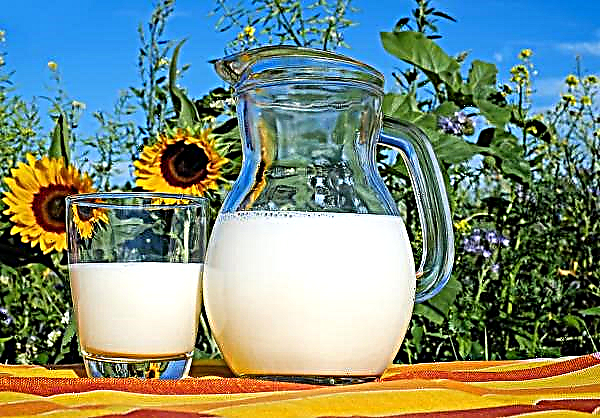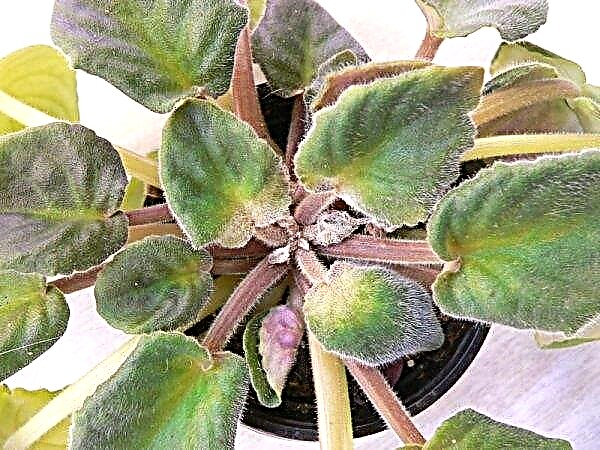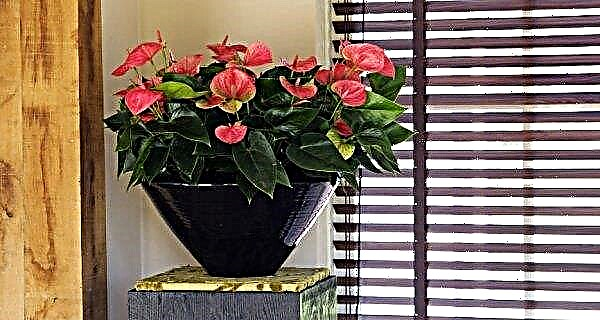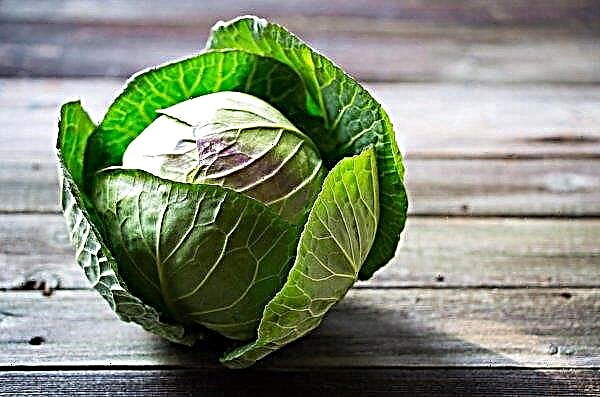There are many types of hydrangea (hydrangia): arboreal, paniculate, dusty, curly, radiant. Most of them tolerate winter frosts well and do not require additional shelter. But varieties of large-leaf hydrangia are afraid of the cold and may die in winter. Beginning gardeners will not hurt to find out how to preserve hydrangea in the winter, under what conditions it will be most comfortable.
How to save in the winter in the garden
For abundant flowering for the next year, from mid-September, it is necessary to carry out measures to preserve shrubs in winter. To begin with, it is worth removing all the leaves on the branches, except the upper ones. This will help the shoots to lignify. Dried inflorescences can not be touched, it is better to remove them in the spring before the first flowering bud. To enhance immunity, the plant needs to be fed with phosphorus-potassium fertilizer. After that, at the end of October, you can cover the bush.

There are many ways to save it in the open ground, it all depends on weather conditions in a particular area. Tree-like and panicled species in the southern regions are quite easy to sprinkle with earth. Small bushes can be completely covered with peat crumb, and covered with agrofibre from above. Below you will learn how to prepare adult plants for wintering. Any of these methods requires two layers of insulation. The second layer can even be a layer of snow.
Did you know? The meaning of a hydrangea flower is “gratitude”, “sincerity”. The deep meaning, beauty, smell made it popular for making wedding compositions.
Frame shelters
Curly or tall hydrangia varieties need frames made from frames or metal mesh. An old powerful flower is difficult to bend to the ground, so it needs support.
To create such a shelter you need to follow these tips:
- After removing the foliage, the bush must be wrapped in a covering material (lutrasil) and secured with tape or rope.
- Then, a frame is installed above the plant, which is 15 cm higher than the sheltered plant.
- Autumn leaves fall asleep in the middle of the frame structure.
- At the end, the structure is covered with roofing material or burlap.
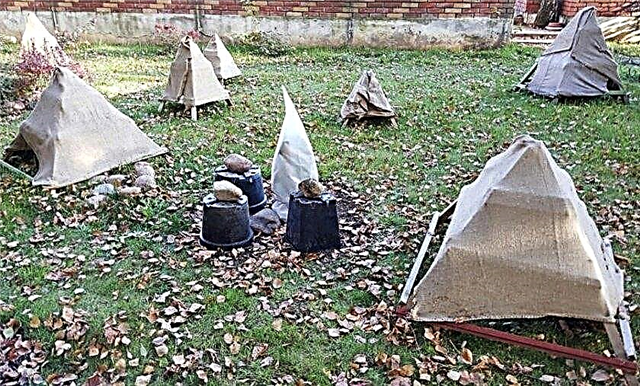 In this state, the bush remains until the onset of spring heat.
In this state, the bush remains until the onset of spring heat.Plane method
Preparing hydrangia for winter can be done using the shield panel method. It is efficient and low cost.
If you decide on this method, then follow these steps:
- On one or both sides of the plant, lay wooden planks (shields).
- Pre-hammer a few nails into them at the edges.
- At the base of the bush, lay the straw layer tightly.
- After that, carefully tilt the stems onto the straw and lay them on the boards.
- Fasten the shoots to the hammered nails with a rope.
- Top with a heater made of straw, foliage, peat.
- Cover the fixture with covering material, and fix the top with a second layer of boards.

Cheap covering materials
You can procure raw materials for sheltering hydrangeas yourself. Peat, sawdust, straw, needles, spruce branches (spruce branches), dry foliage are suitable for this. In winters with little snow they will not be enough. It will be better if you purchase a special fiber from nonwoven polypropylene in the store.
It has different names:
- spanbond;
- agrotextile;
- agrofibre;
- geotextiles;

These materials are beneficial in that they can help the plant winter for up to 10 years. Hydrangea bind them in two layers. For this, it is better to use agrofabric of white color.
Do I need to dig up for the winter
You can dig up very tender varieties of large-leaf hydrangia in severe winters in late autumn. Perform this procedure when the air cools to 0 ° C. Remove old shoots before digging. Dig a bush around a circle at a distance of about 50 cm from the center. For a small bush, make the radius smaller. After that, deepen the pit by 50 cm.
It is better if someone helps you to hold the flower in a convenient location, and then pulls out the root system along with the soil lump. Then the flower with the earth should be lowered into a prepared vessel. In order not to dig up a shrub every year, you can plant it in a large container, which will only need to be transferred to a chilled room or cellar for the winter.
Important! You need to store the dug hydrangea bush with a large piece of soil so that all the roots in it are hidden. Better put it in a drainage pot.
How to store dug hydrangea at home
Winter hydrangea should be stored in a pre-designed room. It can be a warmed veranda, a loggia, a cool room, a cellar. The storage location must be selected based on where the plant grew earlier - in open ground or in a pot.
On the balcony
A good place to save dug bushes will be a glazed balcony or loggia. The main condition is to maintain a constant temperature at the same level - up to + 10 ° С. In such conditions, the plant will be in a state of winter dormancy. So that the plant does not release leaves when the temperature rises, you can cover the soil around the roots with a layer of snow.
In the room
Sometimes small dug bushes in pots can be identified for the winter in a cool room. You can put a flower in a container on the windowsill, where there will be additional illumination for it. After wintering, such plants will require hardening, so take them out into the street, starting from 30 minutes. Then increase the hardening time.
Did you know? In the homeland of hydrangea, in Japan, flower petals are added to some salads. Such dishes are considered truly "royal", because hydrangea is also called the Japanese rose.
In the cellar or basement
Large plants before wintering must not only be dug up, but also trimmed at a height of 20-30 cm from the root surface. They will feel best in the basement or cellar. The room before this needs to be prepared. He needs drying and processing from parasites and mold, which is done before laying vegetables there. Truncated hydrangia bushes after planting will be able to bloom later - in August - September.
How to care in winter
Once you have found a place for wintering hydrangeas, create all the right conditions for her. Take care of the correct watering, temperature and light conditions. The main thing that needs to be provided to the plant is the rest period.
Watering
Water the plants once a week. It is important that the room does not accumulate excess moisture, so it needs ventilation. In the basement, for this purpose, you can put containers with quicklime. To prevent water from accumulating at the bottom of the pot during winter watering, take care of a good drainage layer.
Rest period
For abundant flowering hydrangia, a rest period is necessary. All leaves in this period must either be discarded or torn off. You can help the plant and cut the leaves in half. After that, it itself will gradually discard the foliage. For further storage you need a dry, cool room. It is better if these 2–2.5 months of hydrangea were darkened.
Temperature mode
The optimal temperature for storing dug bushes will be +2 ... + 10 ° С. With increasing heat, the earthen lump may dry out. The kidneys may also bloom ahead of schedule. Do not place containers with hydrangea in the draft. Regular ventilation will help regulate the temperature.
Important! In cases of severe frosts, it is necessary to additionally cover large-leaved hydrangea on the street with a cardboard box or burlap.
Light mode
Even if you keep containers with bushes in the basement, take care of good lighting with the onset of heat. For this, fluorescent lamps are suitable. If this is not done, then the buds on the branches will form weak and will be covered with mold. Lighting must be turned on from mid-February after a period of rest.
How to keep hydrangea rooted cuttings in winter
Rooted cuttings are best kept in a greenhouse. It will be even better if they are grown there. In greenhouse conditions, the temperature is softer than outside. They will have chances to survive on the street only when a lot of snow falls. With the same snow, you can save plants in the greenhouse if you pour it there in a large layer. It gradually evaporates there, and the cuttings do not freeze, but become stiff. The snow also melts and nourishes the roots. It will be enough to fill up cuttings of 10 cm of snow.

Own experience and article tips will help you properly maintain hydrangea in the winter. In the spring, healthy buds will appear on well-groomed bushes. If you follow all the rules of wintering, then in the middle lane you can grow a wide variety of varieties of hydrangia.

